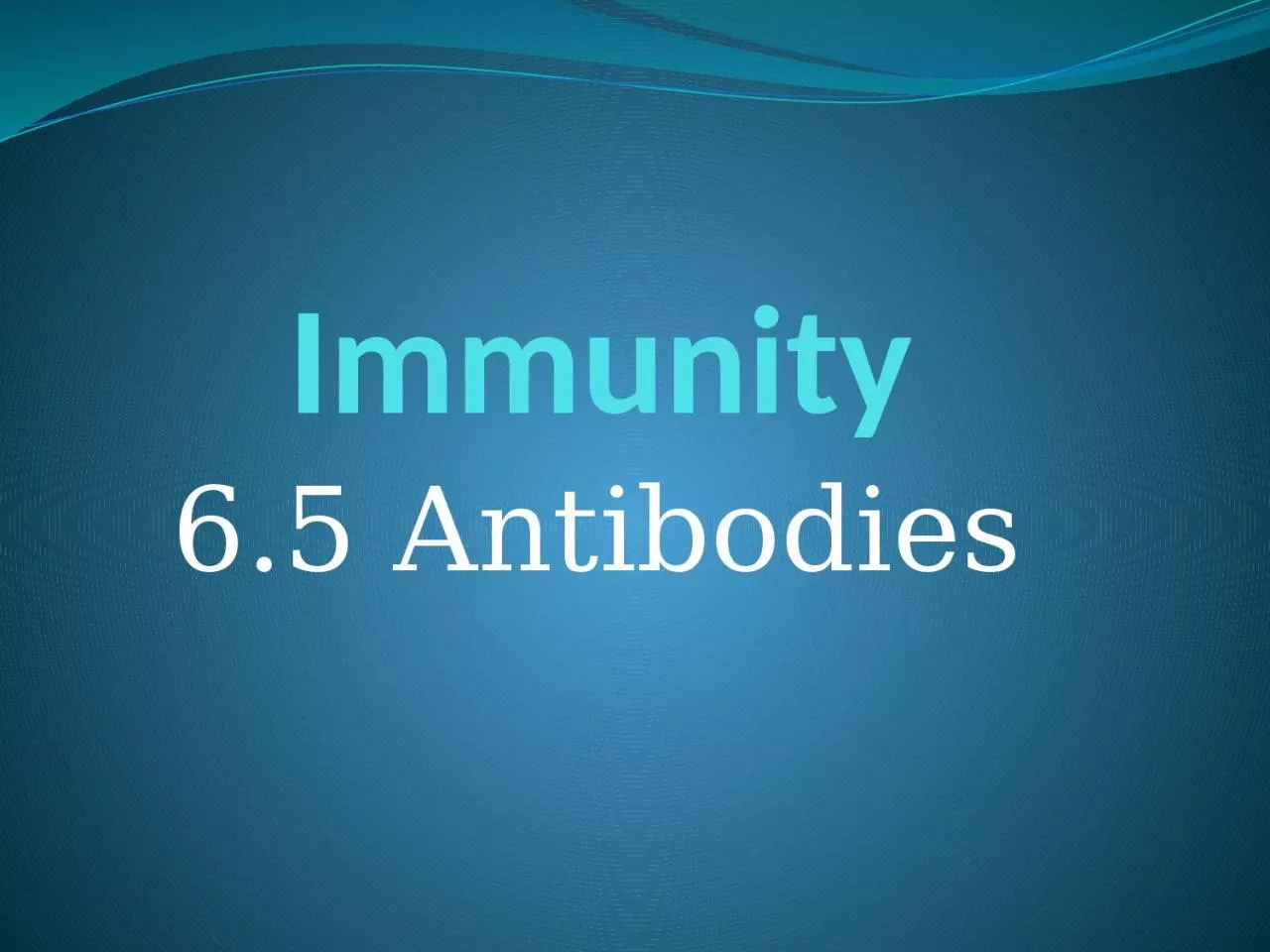

Learning outcomes Student should be able to understand the following Antibody structure and the formation of an antigenantibody complex The use of monoclonal antibodies in enabling the targeting of specific substances and cells ID: 1036964
Download Presentation The PPT/PDF document "Immunity 6.5 Antibodies" is the property of its rightful owner. Permission is granted to download and print the materials on this web site for personal, non-commercial use only, and to display it on your personal computer provided you do not modify the materials and that you retain all copyright notices contained in the materials. By downloading content from our website, you accept the terms of this agreement.
1. Immunity 6.5 Antibodies
2. Learning outcomesStudent should be able to understand the following:Antibody structure and the formation of an antigen-antibody complexThe use of monoclonal antibodies in enabling the targeting of specific substances and cells.Candidates should be able to evaluate methodology, evidence and data relating to the use of monoclonal antibodiesdiscuss ethical issues associated with the use of monoclonal antibodies explain the role of the scientific community in validating new knowledge about monoclonal antibodies, thus ensuring integritydiscuss the ways in which society uses scientific knowledge relating to monoclonal antibodies to inform decision-making.
3. Antibodies Antibodies are also known as immunoglobulins.They are proteins synthesised by B lymphocytes.They are very specific, each antigen has it’s own antibody.Antibodies have a binding site that fits very precisely onto the antigen to form an antigen-antibody complex.
4. Structure of an antibody
5. Functions of antibodies
6. Functions of antibodies
7. Functions of antibodies
8. Functions of antibodies
9. Functions of antibodies
10. Functions of antibodies
11. Antibodies The remarkable specificity of antibodies makes them promising agents for human therapy. But there are problems. The response of the immune system to any antigen, even the simplest, is polyclonal. That is, the system manufactures antibodies of a great range of structures both in their binding regions as well as in their effector regions. Even if one were to isolate a single antibody-secreting cell, and place it in culture, it would die out after a few generations because of the limited growth potential of all normal somatic cells. What is needed is a way to make "monoclonal antibodies"
12. Monoclonal antibodiesThis problem was solved for mice in 1975 with a technique devised by Köhler and Milstein (for which they were awarded a Nobel Prize). An antibody-secreting B cell, like any other cell, can become cancerous. The unchecked proliferation of such a cell is called a myeloma. Köhler and Milstein found a way to combine the unlimited growth potential of myeloma cells with the predetermined antibody specificity of normal immune spleen cells.They did this by literally fusing myeloma cells with antibody-secreting cells from an immunized mouse. The technique is called somatic cell hybridization. The result is a hybridoma. Monoclonal antibodies animation
13.
14. Ethical production and use of monoclonal antibodiesThe development of monoclonal antibodies has provided society with the power to treat diseases in a whole new way.However with this power and opportunity comes great responsibility.The use of monoclonal antibodies raises some ethical issues
15. Ethical issuesProduction involves the use of mice (to produce antibodies and cancer cells).To eliminate the need for humanisation of the antibody, transgenic mice can be used (genetic engineering).There have been some deaths associated with the use of monoclonal antibodies for the treatment of multiple sclerosis.Testing for the safety of new drugs presents dangers e.g. monoclonal antibody (TGN1412) induced multiple organ failure in 6 healthy volunteers in London in March 2006.
16. Learning outcomesStudent should be able to understand the following:Antibody structure and the formation of an antigen-antibody complexThe use of monoclonal antibodies in enabling the targeting of specific substances and cells.Candidates should be able to evaluate methodology, evidence and data relating to the use of monoclonal antibodiesdiscuss ethical issues associated with the use of monoclonal antibodies explain the role of the scientific community in validating new knowledge about monoclonal antibodies, thus ensuring integritydiscuss the ways in which society uses scientific knowledge relating to monoclonal antibodies to inform decision-making.